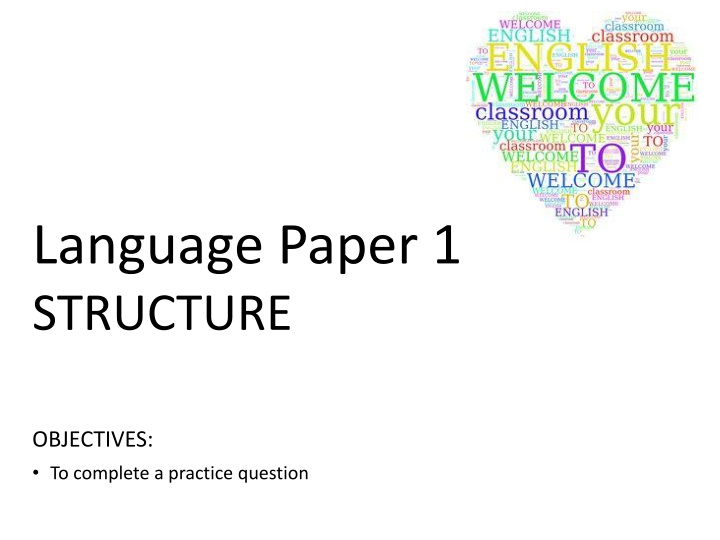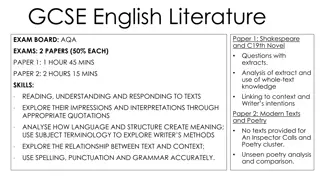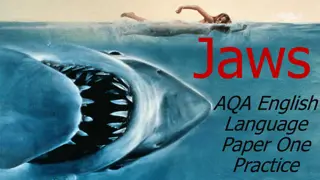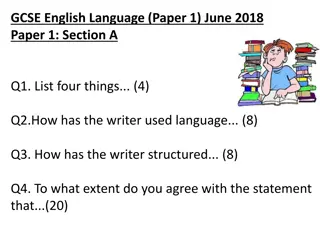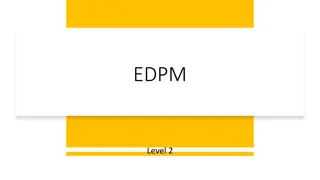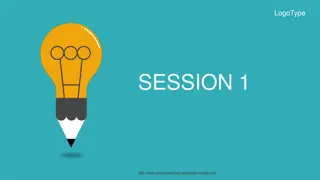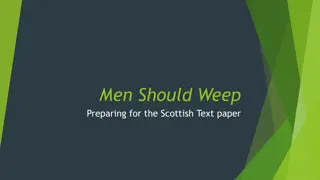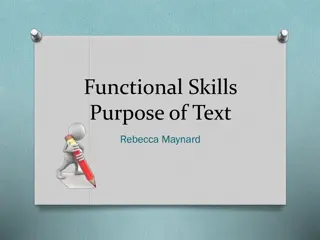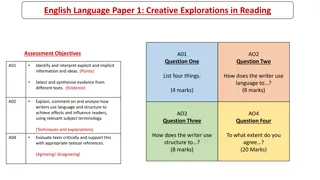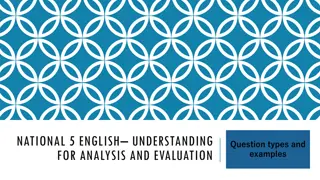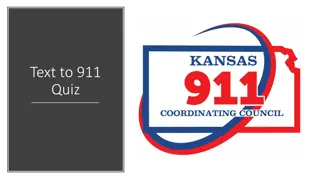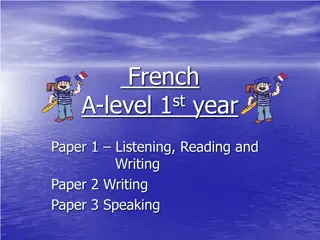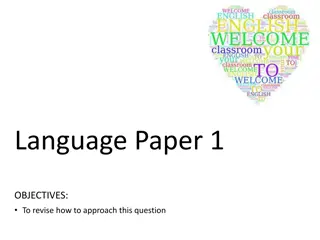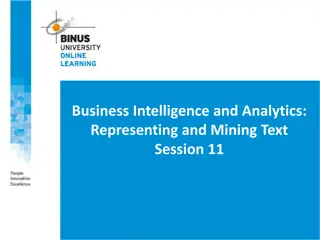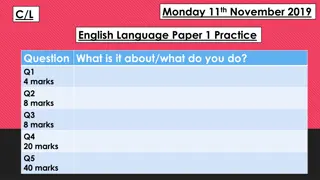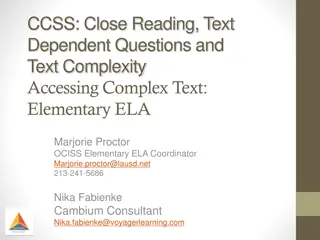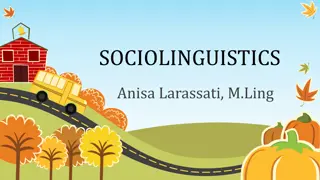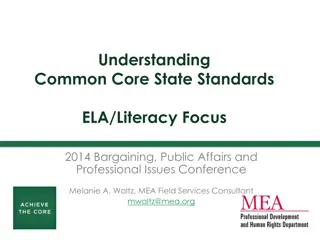Strategies for Analyzing Text Structure in Language Paper 1 Practice Questions
Enhance your skills in analyzing the structure of language paper questions with these top tips: focus on key words, identify structural techniques, include key quotes, reference reader reactions, discuss important elements like pace and change, utilize PEES method, and aim for clarity and relevance in your response.
Download Presentation

Please find below an Image/Link to download the presentation.
The content on the website is provided AS IS for your information and personal use only. It may not be sold, licensed, or shared on other websites without obtaining consent from the author.If you encounter any issues during the download, it is possible that the publisher has removed the file from their server.
You are allowed to download the files provided on this website for personal or commercial use, subject to the condition that they are used lawfully. All files are the property of their respective owners.
The content on the website is provided AS IS for your information and personal use only. It may not be sold, licensed, or shared on other websites without obtaining consent from the author.
E N D
Presentation Transcript
Language Paper 1 STRUCTURE OBJECTIVES: To complete a practice question
Structure words 1. coFus 2. neCahg 3. caeP 4. truncIotdio of a wNe arCahtcre 5. dRaere 6. ntatrCso 7. hroSt tneScense
Structure words 1. FOCUS 2. CHANGE 3. PACE 4. INTRODUCTION OF A NEW CHARACTER 5. READER 6. CONTRAST 7. SHORT SENTENCES
Mark scheme- question 3: What are the key words? Level 4 7 8 marks P________ and D___________ Level 3 5 6 marks C________ and R___________ Level 2 3 4 marks S________ and A___________ Level 1 1 2 marks S________ and L___________
Mark scheme- question 3: This is what you are aiming for: Level 4 7 8 marks Perceptive and detailed Level 3 5 6 marks Clear and relevant Writing in a straightforward way- using PEES and including key structure words Level 2 3 4 marks Some, attempts Level 1 1 2 marks Simple, limited In order to make sure we secure this band, let s look at some top tips
Question 3 TOP TIPS! 1. To get into band 3 you need to be C___________ and R____________. 2. Highlight the _______ ___________ in the question and use them in your answer. 3. Read the W__________ source and identify ___________ techniques. 4. You must include a key quote for each point and the words W___________ and R____________. 5. You must refer to the R________ R__________. 6. Do NOT analyse ____________ features. 7. Key words are: P__________ , F_____________ and C__________ 8. You must talk about the O____________ , Change in F___________ and the E______________ 9. You must write 3 ___ ___ ___ ___ paragraphs 10. It is worth _______ marks you should try to write a whole page and spend approximately _______ minutes on it!
Question 3 TOP TIPS! 1. To get into band 3 you need to be clear and relevant. 2. Highlight the key words in the question and use them in your answer. 3. Read the whole source and identify structural techniques. 4. You must include a key quote for each point and the words writer and reader. 5. You must refer to the reader s reaction 6. Do NOT analyse language features. 7. Key words are: pace, focus and change 8. You must talk about the opening, change in focus and the ending 9. You must write 3 P E E S paragraphs 10. It is worth 8 marks you should try to write a whole page and spend approximately 15 minutes on it!
New source You will be writing a timed response in this lesson an extract from this text. I will be marking these so try your best! So, let s look at the source!
The Lovely Bones Read and highlight the key information in the box at the top of the page! The Lovely Bones by Alice Sebold, published 2002. The extract below is the opening of a novel. The narrator is a teenage girl who has been murdered.
My name was Salmon, like the fish; first name, Susie. I was fourteen when I was murdered on December 6, 1973. In newspaper photos of missing girls from the seventies, most looked like me: white girls with mousy brown hair. This was before kids of all races and genders started appearing on milk cartons or in the daily mail. It was still back when people believed things like that didn t happen. BEGINNING In my junior high yearbook was a quote from a Spanish poet my sister had turned me on to, Juan Ramon Jimenez. It went like this: "If they give you ruled paper, write the other way." I chose it both because it expressed my contempt for my structured surroundings a la the classroom and because, not being some dopey quote from a rock group, I thought it marked me as literary. I was a member of the Chess Club and Chem Club and burned everything I tried to make in Mrs. Delminico s home economics class. My favorite teacher was Mr. Botte, who taught biology and liked to animate the frogs and crawfish we had to dissect by making them dance in their waxed pans. 1. How does it open? 2. What is the focus? Setting? Character? Dialogue? What is the reader s reaction? I wasn t killed by Mr. Botte, by the way. Don t think every person you re going to meet in here is suspect. That s the problem. You never know. Mr. Botte came to my memorial (as, may I add, did almost the entire junior high school I was never so popular) and cried quite a bit. He had a sick kid. We all knew this, so when he laughed at his own jokes, which were rusty way before I had him, we laughed too, forcing it sometimes just to make him happy. His daughter died a year and a half after I did. She had leukemia, but I never saw her in my heaven. MIDDLE The murderer was a man from our neighborhood. My mother liked his border flowers, and my father talked to him once about fertilizer. My murderer believed in old-fashioned things like eggshell and coffee grounds, which he said his own mother had used. My father came home smiling, making jokes about how the man s garden might be beautiful but it would stink to high heaven once a heat wave hit. 1. What does the focus change to? 2. Does the pace change? 3. Is a new character introduced? What is the reader s reaction? But on December 6, 1973, it was snowing, and I took a shortcut through the cornfield back from junior high. It was dark out because the days were shorter in winter, and I remember how the broken cornstalks made my walk more difficult. The snow was falling lightly, like a flurry of small hands, and I was breathing through my nose until it was running so much that I had to open my mouth. Six feet from where Mr. Harvey stood, I stuck my tongue out to taste a snowflake. "Don't let me startle you," Mr. Harvey said. Of course, in a cornfield, in the dark, I was startled. After I was dead I thought about how there had been the light scent of cologne in the air but that I had not been paying attention, or thought it was coming from one of the houses up ahead. "Mr. Harvey," I said. "You're the older Salmon girl, right?" "Yes." ENDING "How are your folks?" Although the eldest in my family and good at acing a science quiz, I had never felt comfortable with adults. "Fine," I said. I was cold, but the natural authority of his age, and the added fact that he was a neighbour and had talked to my father about fertilizer, rooted me to the spot. 1. How does the text end? 2. Resolution or cliff-hanger? What is the reader s reaction? "I've built something back here," he said. "Would you like to see?" "I'm sort of cold, Mr. Harvey," I said, "and my mom likes me home before dark." "It's after dark, Susie," he said. I wish now that I had known this was weird. I had never told him my name
This is what I found My name was Salmon, like the fish; first name, Susie. I was fourteen when I was murdered on December 6, 1973. In newspaper photos of missing girls from the seventies, most looked like me: white girls with mousy brown hair. This was before kids of all races and genders started appearing on milk cartons or in the daily mail. It was still back when people believed things like that didn t happen. BEGINNING In my junior high yearbook was a quote from a Spanish poet my sister had turned me on to, Juan Ramon Jimenez. It went like this: "If they give you ruled paper, write the other way." I chose it both because it expressed my contempt for my structured surroundings a la the classroom and because, not being some dopey quote from a rock group, I thought it marked me as literary. I was a member of the Chess Club and Chem Club and burned everything I tried to make in Mrs. Delminico s home economics class. My favorite teacher was Mr. Botte, who taught biology and liked to animate the frogs and crawfish we had to dissect by making them dance in their waxed pans. 1. How does it open? 2. What is the focus? Setting? Character? Dialogue? What is the reader s reaction? I wasn t killed by Mr. Botte, by the way. Don t think every person you re going to meet in here is suspect. That s the problem. You never know. Mr. Botte came to my memorial (as, may I add, did almost the entire junior high school I was never so popular) and cried quite a bit. He had a sick kid. We all knew this, so when he laughed at his own jokes, which were rusty way before I had him, we laughed too, forcing it sometimes just to make him happy. His daughter died a year and a half after I did. She had leukemia, but I never saw her in my heaven. MIDDLE The murderer was a man from our neighborhood. My mother liked his border flowers, and my father talked to him once about fertilizer. My murderer believed in old-fashioned things like eggshell and coffee grounds, which he said his own mother had used. My father came home smiling, making jokes about how the man s garden might be beautiful but it would stink to high heaven once a heat wave hit. 1. What does the focus change to? 2. Does the pace change? 3. Is a new character introduced? What is the reader s reaction? But on December 6, 1973, it was snowing, and I took a shortcut through the cornfield back from junior high. It was dark out because the days were shorter in winter, and I remember how the broken cornstalks made my walk more difficult. The snow was falling lightly, like a flurry of small hands, and I was breathing through my nose until it was running so much that I had to open my mouth. Six feet from where Mr. Harvey stood, I stuck my tongue out to taste a snowflake. "Don't let me startle you," Mr. Harvey said. Of course, in a cornfield, in the dark, I was startled. After I was dead I thought about how there had been the light scent of cologne in the air but that I had not been paying attention, or thought it was coming from one of the houses up ahead. "Mr. Harvey," I said. "You're the older Salmon girl, right?" "Yes." ENDING "How are your folks?" Although the eldest in my family and good at acing a science quiz, I had never felt comfortable with adults. "Fine," I said. I was cold, but the natural authority of his age, and the added fact that he was a neighbour and had talked to my father about fertilizer, rooted me to the spot. 1. How does the text end? 2. Resolution or cliff-hanger? What is the reader s reaction? "I've built something back here," he said. "Would you like to see?" "I'm sort of cold, Mr. Harvey," I said, "and my mom likes me home before dark." "It's after dark, Susie," he said. I wish now that I had known this was weird. I had never told him my name.
Beginning, middle or end? Which quote? 1. Flashback- sets the scene of the murder. Tone is ominous due to the bad weather and her unusual route home. But on December 6, 1973, it was snowing, and I took a shortcut through the cornfield back from junior high 2. Tension is building as the speech here signals the beginning of the end- we know his murderous intentions: the outcome of her death is inevitable. "I've built something back here," he said. "Would you like to see?" 3. Establishes the event that will be at the centre of the story. This shocks the reader. first name, Susie. I was fourteen when I was murdered on December 6, 1973
Timed writing You have 15 minutes to write your response You are ALLOWED to use your placemats
